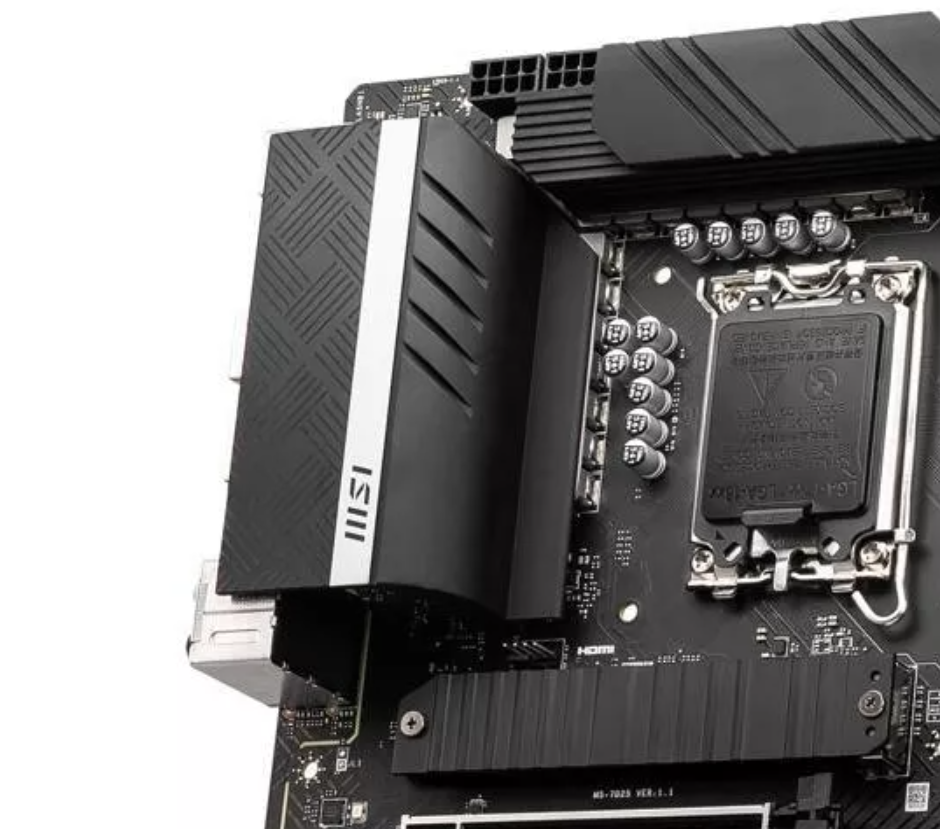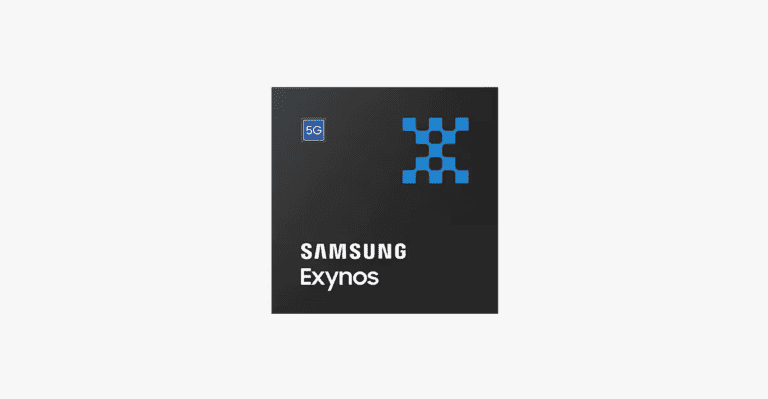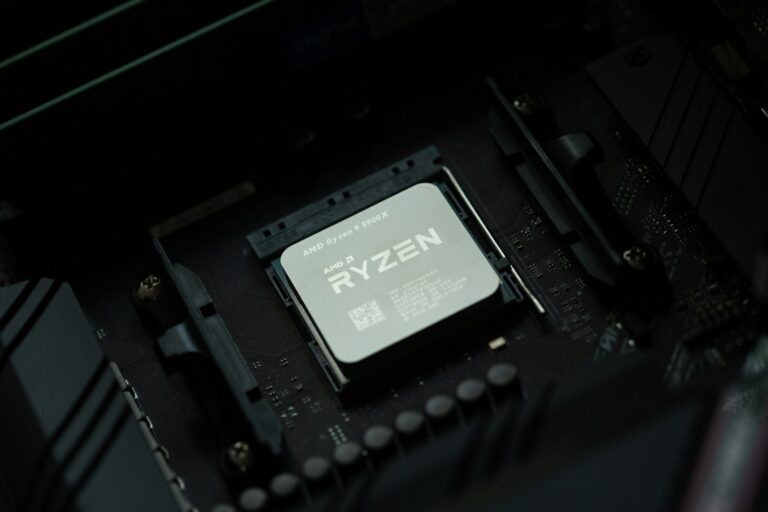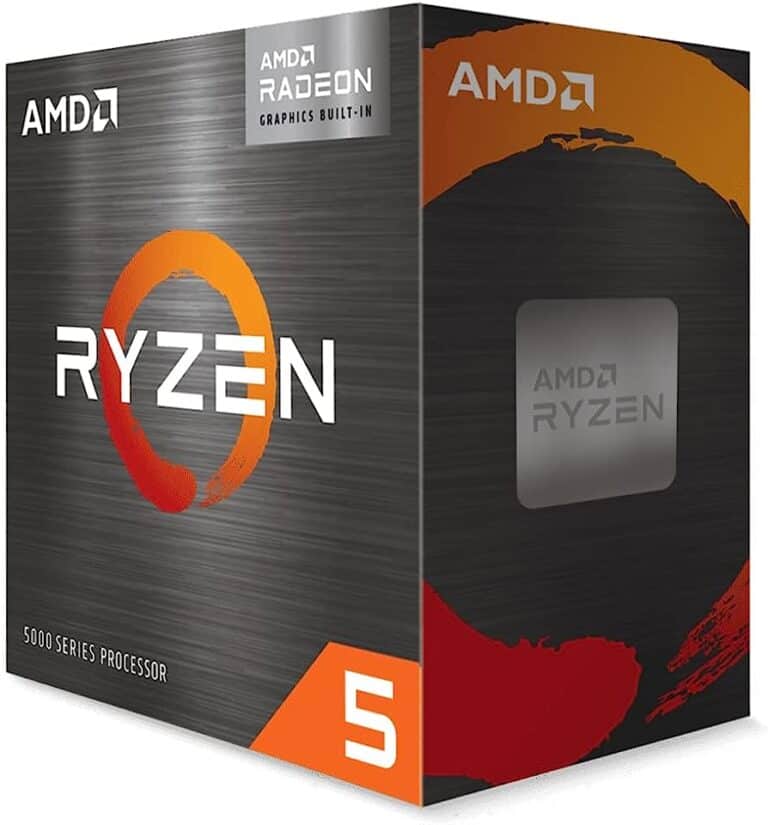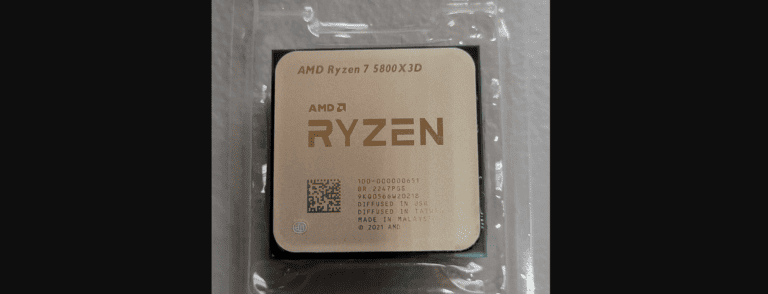Intel’s CPU socket history shows how processors and motherboards have advanced together over time. From the first Intel 4004 microprocessor in 1971 to the latest Core generations, each socket design reflects a step forward in computing needs. Intel CPU sockets define which processors work with which motherboards, making them a key factor in system compatibility and performance.
The timeline includes early sockets like Socket 7 in the mid-1990s, which supported Pentium and Celeron processors, and later the shift to the LGA series starting with LGA 775 in 2004. Each release brought changes in pin layouts, power delivery, and supported processor families. The most recent LGA 1700 socket, released in 2021, supports Intel’s 12th and 13th Gen Core processors, while the newly released LGA 1851 powers current Arrow Lake CPUs and potentially future releases as well.
By looking at the socket list, you can trace the evolution of Intel processors and understand why certain upgrades require new hardware. This quick reference guide makes it easier to see how Intel’s design choices shaped the path from early chips like the 8086 to today’s high-performance Core i9 models.
Intel CPU Socket History
Intel has consistently evolved its CPU socket designs over the decades to support advancing processor technologies, improved performance, and new features. Each socket generation represents significant technological leaps in processing power, efficiency, and capabilities.

Intel CPU Socket Release History Table
| Socket Name | Release Year | Pin/Contact Count | Architecture/Generation | Supported Processors | Socket Type | Key Features |
|---|---|---|---|---|---|---|
| Socket 1 | 1989 | 169 | 486 | 486 DX | PGA | First standardized socket |
| Socket 2 | 1992 | 238 | 486 | 486 DX2, DX4 | PGA | Support for DX2/DX4 |
| Socket 3 | 1994 | 237 | 486 | 486 DX, DX2, DX4 | ZIF PGA | Voltage regulation |
| Socket 4 | 1993 | 273 | P5 | Pentium 60, 66 MHz | PGA | First Pentium socket |
| Socket 5 | 1994 | 320 | P5 | Pentium 75-133 MHz | PGA | 3.3V operation |
| Socket 7 | 1995 | 321 | P5 | Pentium, Pentium MMX | PGA | MMX support |
| Super Socket 7 | 1997 | 321 | P5/K6 | Pentium MMX, AMD K6 | PGA | 100MHz FSB |
| Slot 1 | 1997 | 242 | P6 | Pentium II, early PIII | SECC | Cartridge design |
| Socket 370 | 1999 | 370 | P6 | Celeron, Pentium III | PGA | Return to PGA |
| Socket 423 | 2000 | 423 | NetBurst | Early Pentium 4 | PGA | First P4 socket |
| Socket 478 | 2000 | 478 | NetBurst | Pentium 4, Celeron | mPGA | Micro-PGA design |
| LGA 775 | 2004 | 775 | NetBurst/Core | P4, PD, Core 2 | LGA | First LGA socket |
| LGA 1366 | 2008 | 1366 | Nehalem | Core i7, Xeon | LGA | Triple-channel DDR3 |
| LGA 1156 | 2009 | 1156 | Nehalem | Core i3/i5/i7 (1st gen) | LGA | Integrated memory controller |
| LGA 1155 | 2011 | 1155 | Sandy Bridge | Core i3/i5/i7 (2nd-3rd gen) | LGA | 32nm process |
| LGA 2011 | 2011 | 2011 | Sandy Bridge-E | Core i7 Extreme, Xeon | LGA | Quad-channel DDR3 |
| LGA 1150 | 2013 | 1150 | Haswell | Core i3/i5/i7 (4th gen) | LGA | 22nm process |
| LGA 2011-3 | 2014 | 2011 | Haswell-E | Core i7 Extreme | LGA | DDR4 support |
| LGA 1151 | 2015 | 1151 | Skylake | Core i3/i5/i7 (6th-7th gen) | LGA | 14nm process |
| LGA 2066 | 2017 | 2066 | Skylake-X | Core i7/i9 Extreme | LGA | HEDT platform |
| LGA 1151 v2 | 2017 | 1151 | Coffee Lake | Core i3/i5/i7 (8th-9th gen) | LGA | Incompatible with v1 |
| LGA 1200 | 2020 | 1200 | Comet Lake | Core i3/i5/i7/i9 (10th-11th gen) | LGA | PCIe 4.0 support |
| LGA 1700 | 2021 | 1700 | Alder Lake | Core i3/i5/i7/i9 (12th-14th gen) | LGA | Still in use |
| LGA 1851 | 2024 | 1851 | Meteor Lake | Core 15th gen | LGA | Current mainstream |
Server/Workstation Sockets
| Socket Name | Release Year | Contact Count | Target Market | Supported Processors | Status |
|---|---|---|---|---|---|
| LGA 1356 | 2012 | 1356 | Server | Xeon E5-2400 | Legacy |
| LGA 2011 | 2011 | 2011 | Server/HEDT | Xeon E5-2600 | Legacy |
| LGA 3647 | 2017 | 3647 | Server | Xeon Scalable | Legacy |
| LGA 4189 | 2021 | 4189 | Server | Xeon Ice Lake | Current |
| LGA 4677 | 2023 | 4677 | Server | Xeon Sapphire Rapids | Current |
Socket Type Legend
- PGA: Pin Grid Array (pins on processor)
- mPGA: Micro Pin Grid Array
- ZIF: Zero Insertion Force
- LGA: Land Grid Array (pins on motherboard)
- SECC: Single Edge Contact Cartridge
Notes
- *Asterisk indicates expected/rumored release dates
- Bold indicates current generation sockets
- Socket compatibility is generally limited to specific processor generations
- LGA 1151 v1 and v2 are physically identical but electrically incompatible
- Server sockets often have longer lifespans than consumer sockets
This table represents the complete evolution of Intel’s socket technology from the late 1980s to present day, showing the progression from simple pin-based designs to today’s sophisticated land grid array systems with thousands of contact points.
Early Era Sockets (1970s-1990s)
DIP and PGA Era
- Socket 1 (1989): 169 pins, supported 486 DX processors
- Socket 2 (1992): 238 pins, 486 DX2 and DX4 processors
- Socket 3 (1994): 237 pins, final 486 socket with voltage regulation
- Socket 4 (1993): 273 pins, first Pentium socket
- Socket 5 (1994): 320 pins, Pentium 75-133MHz
- Socket 7 (1995): 321 pins, Pentium and Pentium MMX
Super Socket 7 and Slot Era
- Super Socket 7 (1997): Enhanced Socket 7 with faster bus speeds
- Slot 1 (1997): Cartridge-style connector for Pentium II and early Pentium III
- Socket 370 (1999): Return to pin grid array for later Pentium III and Celeron
Modern Socket Evolution (2000s-2010s)
Socket 478 Era
- Socket 478 (2000): 478 pins, Pentium 4 and Celeron processors
- Introduced micro-PGA format for better density
LGA Introduction
- LGA 775 (2004): Land Grid Array design, no pins on CPU
- Supported Pentium 4, Pentium D, Core 2 series
- Revolutionary contact system reducing CPU damage risk
Early Core Series Sockets
- LGA 1366 (2008): Server and high-end desktop processors
- LGA 1156 (2009): First-generation Core i3, i5, i7 processors
- LGA 1155 (2011): Second and third-generation Core processors
- LGA 2011 (2011): High-end desktop and Xeon processors
Current Generation Sockets (2010s-Present)
Mainstream Desktop Evolution
- LGA 1150 (2013): Fourth-generation Haswell processors
- LGA 1151 (2015): Sixth and seventh-generation Core processors
- LGA 1151 v2 (2017): Eighth and ninth-generation processors (incompatible with original 1151)
- LGA 1200 (2020): Tenth and eleventh-generation Core processors
- LGA 1700 (2021): Twelfth-generation Alder Lake and beyond – current mainstream socket
High-End Desktop (HEDT) Sockets
- LGA 2011-3 (2014): Haswell-E and Broadwell-E processors
- LGA 2066 (2017): Skylake-X and Cascade Lake-X processors
- LGA 1200 HEDT variants: Various high-performance configurations
Current Socket: LGA 1700
Release Date: November 2021 Supported Processors:
- 12th Gen Alder Lake (Core i3, i5, i7, i9)
- 13th Gen Raptor Lake
- 14th Gen Raptor Lake Refresh
Key Features:
- 1700 contact points
- Support for DDR4 and DDR5 memory
- PCIe 5.0 support
- Enhanced power delivery
- Hybrid architecture support (P-cores and E-cores)
(source: Computer City)
Socket Identification Guide
Physical Characteristics
- Pin Count: Higher numbers generally indicate newer sockets
- Size: Modern sockets are larger to accommodate more contacts
- Retention Mechanism: LGA uses spring-loaded contacts vs. PGA pins
How to Identify Your Socket
- CPU-Z Software: Shows socket type in CPU tab
- Physical Inspection: Check motherboard markings near CPU socket
- System Information: Windows System Information tool
- BIOS/UEFI: Often displays socket information
(source: Build Computers)
Socket Compatibility Rules
Backward Compatibility
- Generally Not Supported: Intel sockets are typically not backward compatible
- Chipset Dependencies: Socket compatibility also depends on motherboard chipset
- BIOS Updates: Some newer CPUs require motherboard BIOS updates
Forward Compatibility
- Limited Lifespan: Intel typically supports 2-3 CPU generations per socket
- Planned Obsolescence: New features often require new socket designs
Latest and Future Sockets
LGA 1851 (Released October 24, 2024)
The Intel LGA 1851 socket was officially released with Arrow Lake-S CPUs and 800-series chipsets in late 2024. This socket, which increased the pin count from the previous LGA 1700, supports Intel’s Core Ultra 200 series processors. While it was initially planned for Meteor Lake-S desktop processors, LGA 1851 ended up being exclusively used for the Arrow Lake generation on desktop platforms, with future desktop processors expected to use a new socket.
- Meteor Lake Support: 15th generation processors
- Enhanced Features: Improved power delivery and new instruction sets
- DDR5 Focus: Drops DDR4 support entirely
Key Details:
- Release Date:The LGA 1851 socket was released with the Arrow Lake-S desktop CPUs in late 2024.
- Purpose:It was designed for the next generation of Intel desktop processors, starting with the Core Ultra 200 series.
- Key Features:
- Increased Pins: LGA 1851 has more pins than its predecessor, LGA 1700, but maintains the same physical dimensions and mounting hole placement, ensuring LGA-1700 compatible CPU coolers can be used.
- DDR5 Exclusivity: Unlike the LGA 1700 socket, LGA 1851 supports DDR5 memory only, with a minimum speed of DDR5-5600.
- Enhanced PCIe Connectivity: It features more direct PCIe 5.0 lanes from the CPU for high-speed NVMe SSDs.
- Limited Lifespan:Although it supports high-speed technologies, the LGA 1851 socket is expected to have a short lifespan and is not planned to be used by the Nova Lake generation of CPUs.
Server Socket Evolution
- LGA 4677: Current Xeon server socket
- Future Server Sockets: Expected to grow in pin count for increased I/O
Socket Selection Guide
For New Builds (2024-2025)
Recommended: LGA 1700
- Wide processor selection
- Mature platform
- Good upgrade path
- Balanced price/performance
Budget Considerations
Alternative: LGA 1200
- Lower-cost motherboards
- Still capable performance
- Limited upgrade path
High-End Requirements
Consider: LGA 2066 or server platforms
- Maximum core counts
- Enterprise features
- Higher cost
Key Technological Advances
Manufacturing Improvements
- Contact Density: More contacts enable more CPU features
- Power Delivery: Better voltage regulation and power distribution
- Signal Integrity: Improved high-speed communication
Feature Evolution
- Memory Support: DDR, DDR2, DDR3, DDR4, DDR5 progression
- PCIe Generations: PCIe 1.0 through current PCIe 5.0
- Integrated Graphics: Enhanced iGPU capabilities in modern sockets
Conclusion
Intel’s socket evolution reflects the rapid advancement of computing technology over five decades. From the simple pin configurations of early processors to today’s sophisticated LGA 1700 with 1700 contact points, each generation has enabled significant performance improvements and new capabilities (source: Hardware Secrets).
Understanding socket history helps in:
- Upgrade Planning: Knowing compatibility limitations
- System Building: Choosing appropriate platforms
- Future-Proofing: Selecting sockets with longer lifespans
- Troubleshooting: Identifying compatibility issues
The current LGA 1700 represents a mature, feature-rich platform that will likely remain Intel’s mainstream socket through 2024, making it an excellent choice for new builds and upgrades.
Key Takeaways
- Intel CPU sockets link processors to motherboards and determine compatibility
- Each socket release supports specific processor families and features
- A clear timeline helps track Intel’s progress from 1971 to the latest generations
Frequently Asked Questions
Intel has released many socket types over the years, each tied to specific processor families and features. Some sockets lasted several generations, while others supported only one or two. Compatibility depends on both the socket and the supporting chipset.
What is the chronological order of Intel CPU sockets?
Intel’s earliest sockets included DIP and PGA designs for processors like the 8086 and 80486.
In the mid-1990s, Socket 7 became widely used for Pentium and Celeron CPUs.
Later, Intel moved to LGA sockets, starting with LGA 775 in 2004. From there, sockets such as LGA 1156, LGA 1155, LGA 1150, LGA 1151, LGA 1200, LGA 1700, and LGA 1851 followed.
Which Intel socket is the most current as of 2025?
As of 2025, the most current Intel desktop socket is LGA 1851.
It launched in late 2024 and supports Meteor Lake and Arrow Lake processors.
How do different Intel sockets correlate with CPU generations?
Each socket is matched with specific processor generations. For example, LGA 1150 supports 4th and 5th Gen Core CPUs, while LGA 1151 supports 6th and 7th Gen.
LGA 1200 works with 10th and 11th Gen, and LGA 1700 supports 12th through 14th Gen. LGA 1851 is tied to the 15th Gen Arrow Lake family.
What are the key differences between LGA 1151 and LGA 1200 sockets?
LGA 1151 was introduced in 2015 for 6th and 7th Gen processors, later updated for 8th and 9th Gen. It supported DDR4 memory and PCIe 3.0.
LGA 1200, released in 2020, added support for 10th and 11th Gen CPUs. It improved power delivery and introduced PCIe 4.0 support on some chipsets.
Can you provide a comprehensive list of Intel CPU sockets and their release dates?
- Socket 7 — 1995
- Socket 370 — 1999
- Socket 478 — 2000
- LGA 775 — 2004
- LGA 1156 — 2009
- LGA 1366 — 2008
- LGA 1155 — 2011
- LGA 2011 — 2011
- LGA 1150 — 2013
- LGA 1151 — 2015
- LGA 1200 — 2020
- LGA 1700 — 2021
- LGA 1851 — 2024
Which Intel CPU sockets are compatible with modern motherboards?
Modern motherboards typically support LGA 1200, LGA 1700, and LGA 1851.
LGA 1200 boards remain viable for 10th and 11th Gen builds. LGA 1700 supports 12th through 14th Gen processors. LGA 1851 is the newest option for Intel’s 15th Gen CPUs.

